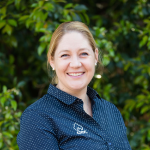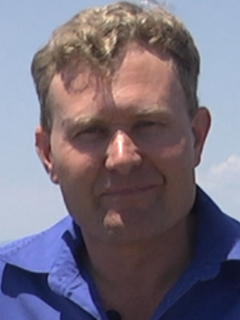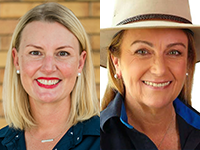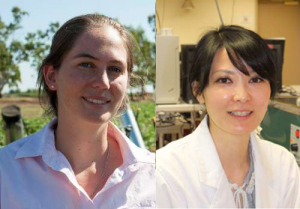Plenary speakers

Dr Alison McCarthy, UniSQ
Artificial intelligence: what is it and what does it mean for cotton?
Artificial intelligence has rapidly evolved into use in everyday tools and is enabling smarter decision-making and analytics across all industries including agriculture. This presentation will give an overview of how artificial intelligence works, and considerations, examples and opportunities for use in agriculture and particularly cotton, for example for sensing and machine vision.

Dr Merry Conaty, CRDC
A digital strategy for the Australian cotton industry, what is it and why should researchers be excited?
Across agriculture and all our supply chains, the demand for data is growing. As markets and brand partners demand more granular information about products and how they have been produced, the Australian cotton industry faces a future where data collection, aggregation and provision to various parts of the supply chain is becoming an urgent priority. Put simply, without high quality data we won’t have a market to sell the cotton we produce, and without a market, we won’t have an industry. CRDC, Cotton Australia, ACSA, ginners, growers, researchers and industry companies like CSD have come together over the last 2 years to develop a ‘Digital Strategy for the Australian Cotton Industry’. Included in this is issues of data collection and management, data privacy and access, as well as a large scale proposal to aggregate on farm and supply chain data into one place, which would make us the first Ag industry in Australia to successfully aggregate all our data onto one central platform. Merry Conaty (CRDC) will describe this new industry data platform, and how it can support and enable us as an industry to describe who we are as an industry, how we produce our cotton, and ensure long term market access for Australian cotton, while simultaneously enhancing the research we do and measuring its impact.

Dr Warwick Stiller, CSIRO
From the Holocene epoch to the era of AI
Cotton has been grown, spun and woven into cloth for at least 5,000 years and by 1500 was generally known around the world. In this presentation, Warwick Stiller takes you on a journey to unravel the origin of cotton, drawing insights into its biology, potential, and limitations. We delve into the historical tapestry of cotton cultivation and its adaptation to diverse environments, shedding light on the crop’s unique characteristics. By understanding its origins, we gain valuable perspectives on cotton’s inherent traits and laying the foundation for unlocking its untapped potential. For hundreds of years, breeders have aimed to improve the crop and are recognised as the grand integrators who constantly balance the imperative for strategic research with the demands of commercial profitability and timelines. We explore the pivotal role breeders have played in shaping past, present, and future innovation. Ground-breaking technologies like artificial intelligence (AI) and gene editing have the potential to further revolutionise the field, opening new avenues for progress with data-driven insights that promise further optimization of breeding strategies and accelerated variety development. Applying these advancements in a practical context, we present a captivating case study that explores new frontiers in cotton breeding. While we celebrate the triumphs of cotton breeding, we also confront the sobering realities of intricate genome complexities and the challenges this provides when exposed to a high input managed farming system.

Dr Oliver Knox, UNE
Soils – their health, myths and sustainable future
Soil health is something that most of us have heard of, but what does it actually mean? Against a background of an increasing body of literature on the subject and a national soil strategy promise of indicators to measure it, we proposed a sustainable soils framework in 2022 that has the potential to go beyond our cotton fields. The driver for this was an acceptance of what we know of our Australian soils, placing scientific evidence over beliefs and, most importantly, to provide something that our growers could easily embrace. With 2023 being the year where the FAO is reminding us that soil is where food begins, why not come on a journey of exploration, discovery and realisation with Oliver Knox, which might just help you better appreciate the dirt beneath your feet for the fragile and phenomenal ecosystem that your soils are. Who knows, you might get so excited that you may end up soiling your undies.

Graham Charles, NSW DPI
The weed control fix
Weeds have been the bane of the cotton industry since its inception (the first commercial crop at Wee Waa in 1961-2 was severely impacted by weeds and flooding). Graham Charles highlights that even though a range of residual and a few over-the-top herbicides are now available, weeds are still adversely impacting yields and require both time and money to manage. Back in 1989, weed control cost around $187/ha, quite a lot relative to the lower yields and prices of that time. The cost of weed management to cotton growers is much lower today…
…or is it? We must not forget the hidden costs of weed control: particularly the scourge of herbicides used in other crops or fallows, that then drift on to a cotton crop, an all-too-common but devastating experience for some. And then there are the ‘own-goals’: root pruning from over-aggressive inter-row cultivation or side dressing; the damage from residual herbicides applied in preceding crops and fallows; residues from tanks that weren’t cleaned out sufficiently, or when the wrong drum was used accidentally. What about the compaction caused by spraying or cultivation operations, or the damage to the neighbouring field, river or the wider environment from the herbicides, the dust, or soil run-off. Consider also future damage from diseases and insects harbouring on uncontrolled weeds, and greenhouse gasses generated by weed management activities.
So the true cost of controlling weeds is usually much higher than we think, but is there a solution?

Simon Blyth, LX Group and INCYT
The role of technology in supporting adoption of best practice – Maverick case study
INCYT/LX partnered with CRDC through the BRII grant program
to develop Maverick, a machinery agnostic technology solution to help growers reduce spray drift and maximise application efficacy. Spray operators run a highly complex multivariable gauntlet within a set of fixed and moving constraints which all too often leads to devastating spray drift events. Reductionistic approaches to the problem such as “rules of thumb” have proven to be ill equipped to effectively solve this problem.
Maverick is an intuitive, user-friendly software application that combines that latest INCYT Smart Farm Technology (including real-time dashboards, sensors on-farm & on-machine and external data sources) to deliver a software based expert advisory system that navigates much of this complexity for the user. Maverick assists the operator to optimise spray planning & machinery set-up, spray application (with live cabin view) and post-spray efficacy evaluation, ultimately motivating and
equipping the operator to achieve best practice in the field.
Special sessions
 Communicating good science: panel discussion
Communicating good science: panel discussion
Megan Woodward (CottonInfo), Pip Courtney (ABC), Iain Wilson and Colleen MacMillan (CSIRO),
Sarah Green (UniSQ)
Whether you’ve just started your research career or you’ve had thousands of journal articles published – there’s diamonds ready to be mined in this panel discussion. Join CottonInfo Communications Lead Megan Woodward as she facilitates a discussion with some of the best science communicators in the business as well as those who know exactly what makes a good yarn – including ABC Landline’s Pip Courtney.
 2019 Early Career Award recipients
2019 Early Career Award recipients
Katie Broughton (CSIRO) and Yui Osani (University of Queensland)
One of Katie’s favourite school texts was The Road Not Taken by Robert Frost. She found the imagery to be incredibly beautiful, but she felt the internal debate inside that one traveller standing where those two roads diverged. Then, at the end of school, Katie stood at her own personal crossroad with two university offers in hand- a Bachelor of Medical Science and Biotechnology OR a Bachelor of Agricultural Science.
Meanwhile, Yui stood at an open field – she could have taken any degree if she was willing to wait. She took the most convenient path (Bachelor of Arts) at that time, only to change her mind soon after.
From only really knowing that they thoroughly enjoyed biology at school, to receiving the Association of Australian Cotton Scientist Early Career Scientist Award in 2019, they never anticipated this would be the path they would take.